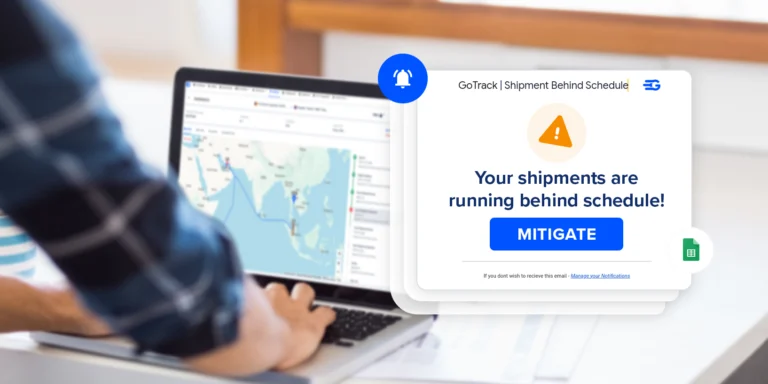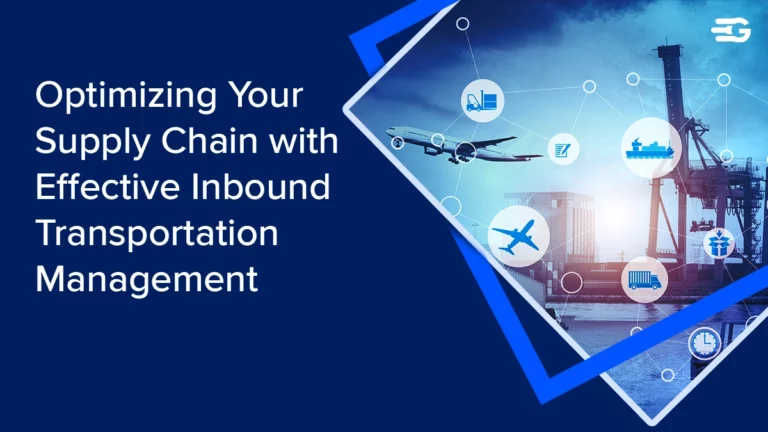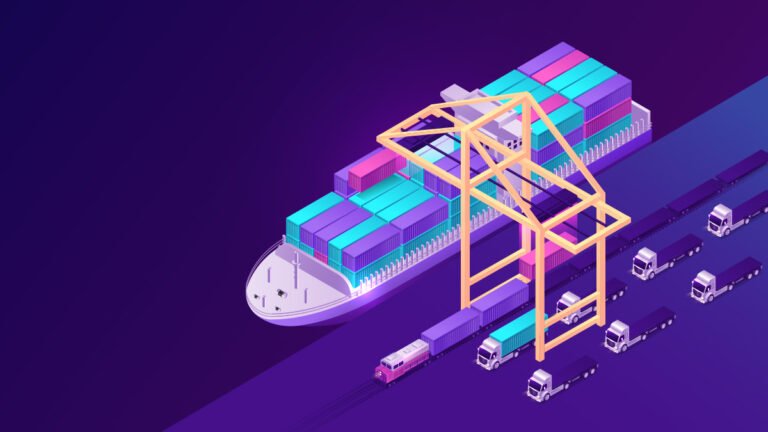Unlocking Efficiency in Logistics: API vs. EDI Integration and the Power of Webhooks
In the world of logistics, efficiency is the name of the game. In a digital age where data reigns supreme, the battle between API, EDI, and Webhooks has never been more critical.
Let us try to understand the difference between EDI, API, and Webhooks with the help of an analogy.
Consider an example where information is to be exchanged between 2 departments of your company.
Here the 2 departments would mean 2 systems between which the information is to be exchanged.
- Method 1: EDI – Similar to sharing information in a Fixed formatted document
- Information in a fixed format where changes are difficult to incorporate
- Both parties need to know the format in EDI
- Changes require agreement
- Method 2: API – Similar to a phone call between 2 departments
- Real-time exchange information exchange as and when required
- API exchange is done through GET and POST requests
- API is simple and flexible for dynamic information sharing
- Method 3: Webhooks – Similar to exchanging information using Instant Messaging/Chat Box
- Updates are shared automatically as and when the event occurs and the receiver is notified
- Only requires setting up the Webhooks endpoint
- Event-driven information sharing
| Key Aspects → | Data Sharing Security | Flexibility to Accommodate changes | Frequency of Data Exchange | Efforts | Cost of Maintenance |
| Type of Integration ↓ | |||||
| EDI | High | Low | Medium | High | High |
| API | High | High | High | Medium | Medium |
| Webhooks | High | High | High | Medium | Medium |
Now, imagine you’re tracking a shipment in real time using your smartphone. With APIs, you get live updates just like tracking a Cab ride. But with EDI, it’s more like getting text messages with a delay – not ideal when you need instant insights in the fast-paced logistics world.
Addressing the Game-Changer – Webhooks
Given the fact that being agile is the need of the hour in logistics operations, Webhooks seem to be the way to go. These are like your logistics industry’s personal assistant, constantly alert and ready to act.
Understanding Webhooks Better
Consider an example where you need to pick up a consignment once it reaches the destination pick-up location. You wish to be notified once it reaches the second-to-last destination to arrange the pick-up. Webhook does that for you as it will notify you whenever a certain milestone for any process is achieved.
Similarly, when a customer places an order, Webhooks make your system quickly create documents, tell the warehouse to get the order ready, and inform the customer with tracking details. Without them, it’s like someone shouting orders across the room and hoping everyone hears and reacts quickly – a logistics nightmare.

Pros and Cons of EDI
In a variety of industries, EDI has emerged as the standard technique for standardized data transmission, enabling effective communication between business partners, logistics companies, and suppliers. It improves operational efficiency and cultivates stronger relationships by substituting electronic document exchange for conventional methods like faxes and emails.
Pros of EDI include:
- Accessibility: EDI, which is widely used in the logistics sector, makes sure that businesses can quickly identify partners who have the necessary technology.
- Security: To provide traceable and secure communication, EDI mandates agreements between commercial partners. Strong privacy and security options are another feature of the protocols.
- Easy to Use: By simplifying communication procedures and lowering manual input, EDI frees up businesses to concentrate on their main business responsibilities.
Cons of EDI include:
- One-to-One Transmission: EDI can work with more than one trading partner, but each transaction is restricted to two firms communicating with one another and needs to be set up differently for each.
- Periodic Transaction Processing: Regular interval processing is automated via EDI, which normally works in batches. Businesses that want more direct and instantaneous connection choose to use APIs.
Pros and Cons of API
APIs present a newer technology that addresses some of the limitations of EDI while introducing its own challenges.
Pros of API
- Faster Communication: Real-time data transmission is made possible by APIs, which frequently rely on cloud apps and allow for nearly instantaneous data gathering, movement, and updates.
- Simplified Data Transmission: By leveraging pre-existing systems such as Enterprise Resource Planning (ERP), APIs, in contrast to EDI, automatically gather data and remove version-matching problems.
- Flexibility: APIs allow businesses to combine them with new solutions since they can adjust to changing supply chain procedures and management technology.
Cons of API
- Limited Partners: Often utilized by startups, APIs may encounter difficulties communicating with more seasoned partners that still rely on EDI.
- Security Concerns: Since other partners can access data via the API, it may not be appropriate to transfer sensitive information over APIs, which could lead to compliance problems.
Pros and Cons of Webhooks
Webhooks and APIs serve as valuable tools for application development and integration, each with its unique approach. Webhooks, unlike APIs, operate on a push model, delivering real-time data as events occur.
Pros of Webhooks:
- Efficiency and Speed: Webhooks provide efficient and quick real-time data transfer by doing away with the requirement for polling or manual updating.
- Flexibility and Customization: Communication can be made flexible and customizable by publishers and subscribers by giving them the ability to define events, data, and formats. Multiple application integrations are supported by multiple subscribers for the same event.
- Webhooks are asynchronous and event-driven, which enables servers to receive event notifications without having to wait for a prompt response. For notifications and real-time updates, this is very helpful.
- Data Push technique: Webhooks’ data push technique is useful in situations where it is impracticable to continuously poll or request data through server-to-server communication.
Cons of Webhooks
- Concerns about Security and Reliability: Webhooks rely on the performance and availability of both publishers and subscribers, they run the risk of being insecure and unreliable. Failures or delays may result from problems like overloading, compromise, or offline status.
- Absence of Delivery Guarantee: There is a chance that data may be lost, inconsistent, or duplicated when using webhooks since there is no guarantee of delivery or acknowledgement. It could be unknown to publishers whether subscribers received and processed the webhook successfully.
- Complexity and Management Challenges: Authentication, error handling, and webhook endpoint setup and maintenance can be difficult and complicated for publishers and subscribers alike. Due to increased coupling and dependency, applications may be more difficult to scale, update, or debug as a result of this complexity.
Who wins among EDI, API, or Webhooks?
API, EDI, and Webhooks, all three of these methods are secure for sharing information, but we also need to think about the system’s setup, costs, and how often we need to share data. In a data-driven world, APIs and webhooks are key for efficiency, cost savings, and staying competitive.
APIs offer real-time data sharing, keeping you updated and accurate. Webhooks go further, allowing quick actions based on data changes for faster decisions.
EDI, on the other hand, is slower and inflexible, relying on batch processing and manual work, like using old technology in a fast-paced world.
How can GoComet help my logistics operation benefit from this?
GoComet is revolutionizing international logistics using data science and machine intelligence for efficiency and cost savings. Our products suite – GoProcure, GoInvoice, GoTrack, and GoShipment make logistics management easy, with auto-generated reports and support. We excel at data integration, ensuring an efficient future with security measures. Say goodbye to manual reviews and welcome a transparent, headache-free logistics experience.
So, why wait? The logistics game is changing rapidly, and embracing the API and webhook revolution is the way forward. With GoComet, you’re not just adapting; you’re leading the way.
By choosing GoComet, you’re not just embracing change; you’re driving it. Your competitors might be stuck in the past, but your logistics operation is moving at the speed of data. It’s not just a choice; it’s a competitive advantage.
Book a Demo with GoComet and step into the future of logistics.






